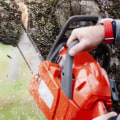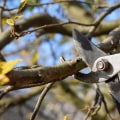Tree pruning is an intense job that requires a great deal of skill, safety precautions, and proper planning. It’s a challenging and dangerous task, often expensive due to the risks involved. Arborists not only prune trees but also remove dead branches and trees that pose hazards to homes and other structures. One wrong cut could send thousands of pounds of wood crashing into a living room or garden.
The reasons for tree removal often relate to safety. Compromised trees, such as those damaged by storms or neglect, pose a significant risk. Dead trees, in particular, become brittle and inflexible over time, making it difficult to control the direction of the fall during pruning. These trees may break unpredictably, scattering branches dangerously. Many times, arborists work on trees entangled with electrical conductors, adding another layer of risk.
Insurance for tree pruning professionals is a significant cost factor. Insuring a worker suspended from a tree with a chainsaw is understandably expensive. Additionally, the location of the tree impacts costs. Trees in difficult-to-access areas, like backyards without driveways, require more time and effort. In such cases, you may need to coordinate with neighbors to allow contractor access.
Healthy and strong trees typically cost more to remove compared to weak or dying ones, with exceptions like fruit trees, which require annual pruning, and evergreen trees, which rarely need trimming. Cutting a tree into sections is often necessary to prevent large pieces from falling on landscapes, streets, or structures. This process adds to the time and complexity of the job.
Unless you’re experienced in tree pruning, a DIY approach may require purchasing expensive equipment and could lead to dangerous outcomes. News accounts frequently highlight accidents involving untrained tree workers or homeowners attempting to cut trees without understanding how they respond to cuts. Proper precautions, equipment, and insurance validation are essential before starting any pruning project.
Another consideration during tree care is how the overall structure complements other aspects of your property, such as roofing options. The proximity of trees to your roof can affect materials, maintenance, and lifespan. Consulting professionals ensures both your trees and roofing are maintained in harmony, protecting your home and landscape.
Pruning large trees poses greater safety risks than smaller ones, making it vital to hire qualified arborists. Over-pruning or improperly cutting a tree can lead to negative long-term impacts on its health and stability. By ensuring proper precautions and working with certified professionals, you can achieve safe and effective tree care that enhances your property.


